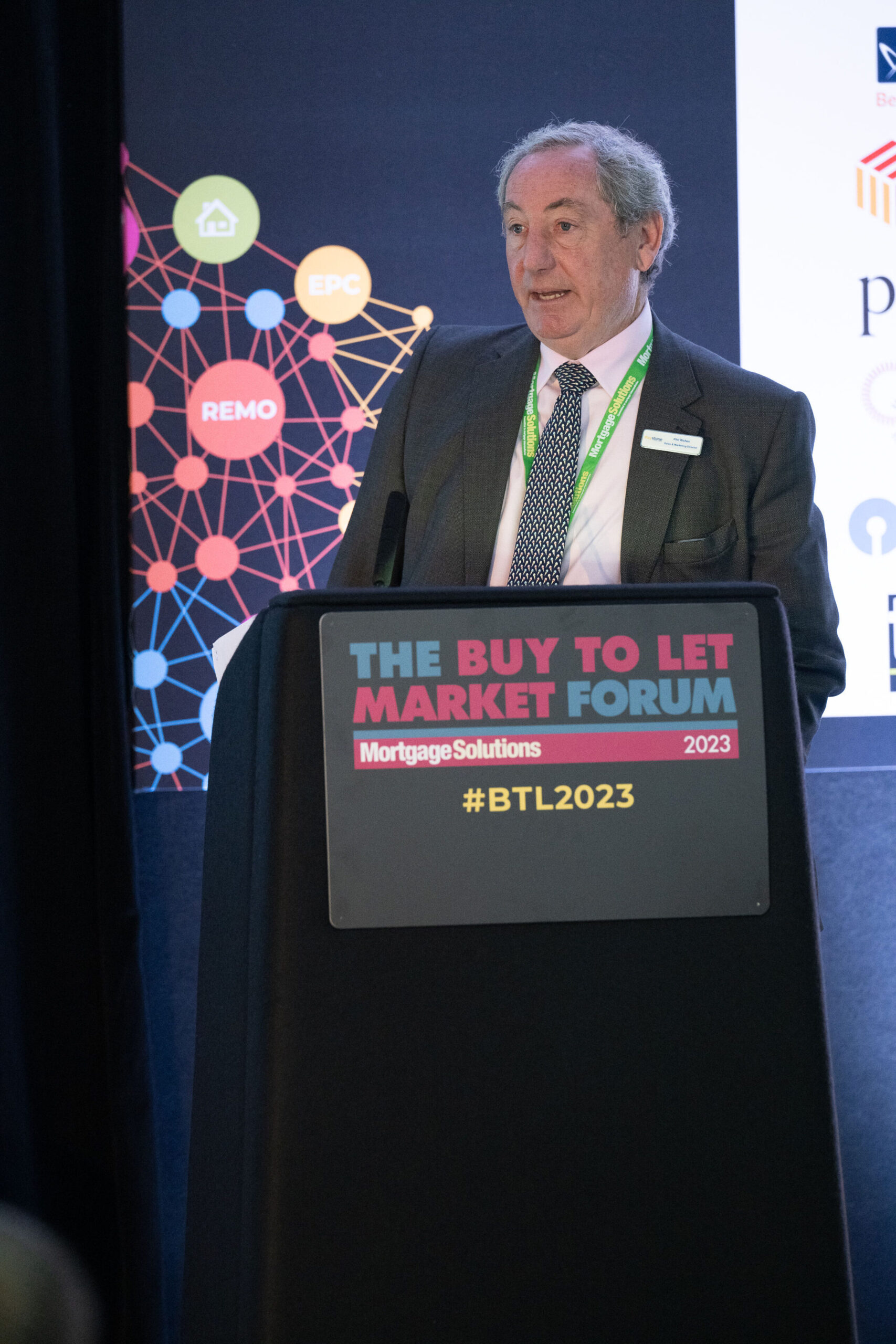Complex Buy To Let
BTL2023: ‘The buy-to-let market is not in a problem state’ – Riches

The buy-to-let market is “nowhere near a problem state” as a large amount of lending form 2016 is coming up for renewal this year and landlords have “war chests” and appetite to buy.
Speaking at The Buy To Let Forum in Bolton, Phil Riches (pictured), sales director at Keystone Property Finance, explained that there was a large cohort of borrowers who fixed in 2016 for five years following stamp duty changes tax changes and the implementation of Prudential Regulatory Authority (PRA) standards.
Around 55 per cent of lending at that time, which is estimated at around £40bn, was on five-year fixed rates.
He continued that “all of that five-year product money is coming to fruition” and clients could potentially end up going onto reversion rates between nine and 9.5 per cent, which would be “hurting your [broker’s] clients”.
“So you need to be looking for a way to help your clients in the short term and then in the long term,” Riches noted.
Riches added that the low base rate environment of the past decade had created an interesting dynamic with landlords, as they borrowed as much as they could against products available and used that money to increase their portfolio or to create a “war chest” for the future.

Introducing the Green Living Reward
Your clients can now get up to £2,000 cashback for making energy-efficient home
Sponsored by Halifax Intermediaries
“Due to the low base rate environment previously, there are lots of landlords that have geared up and have a war chest of funds. They’re ready to pounce, so if people are right that the smaller landlords are selling up, trust me, your larger landlords will pounce.
“They will pounce and buy, and they’ll buy quickly because they’ll know that those are properties they can rent,” he explained.
Riches continued that a lot of larger landlords would have houses in multiple occupation (HMO) and multi-unit freehold blocks (MUFB) in the portfolio, and they would look to grow that as they produced a better yield.
However, he warned that there could be some portfolio landlords that created a HMO but “don’t have the funding correctly put in place for that HMO from their current lender”.
“That’s where you might come into a problem,” he added.
Riches continued that around £55bn worth of buy-to-let lending completed in 2022, which is up from £47bn in 2021. He noted that looking ahead for 2023 predictions range from £38bn to £43bn.
“Given where the market is at the moment, that is about right. So, the market is nowhere near a problem state,” he said.
EPC legislation could be up in the air with upcoming elections
Riches added that EPC legislation was “already having an effect”, despite the fact that it was not yet law, but it was very challenging for landlords.
“It’s a case of does the landlord ignore them? Do they do something about them? Do they work their property into a position where it will become legals? Who knows. That’s a discussion you need to have with clients,” he said.
Riches said that the “likely date” for EPC legislation where all tenancies would need a C rating or higher would be 2028 but there was still a large amount of uncertainty.
“By 2025, we’re likely to get a change of government. Is that government going to be in a position that it can get those changes through parliament? It has still only gone through two readings out of a nine reading Bill, so I’m not convinced it will be in by 2028 but we will see,” he noted.
Securitised lenders can offer product transfers
Riches continued that it was an incorrect assumption that all securitised lenders could not offer product transfers.
“That’s wrong. We are a securitized lender. We have solved the problem and we did it 18 months ago. We can do product transfers,” he said.
However, Riches conceded that there are a “lot of lenders in the market who do securitise who still have not solved the product transfer conundrum”.
He urged brokers to look at lenders that offer product transfers as moving forward customers could “come up with large amount of costs to remortgage with the lender”.
“If a product transfer is available, the costs are very minimal,” Riches noted.
Other key opportunities looking ahead are HMOs and semi-commerical properties. However, he did warn that brokers should be aware of various local councils HMO regulation as some were stricter than others and would be more likely to be declined.
Basel III could have unintended consequences
Riches noted that Basel III regulation, which would come into force later this year or at the start of next year but was still being consulted on, could have unintended consequences on property re-valuations, self-build mortgages and buy-to-let properties.
Citing a blog by Building Society’s Association’s head of mortgage and housing policy Paul Broadhead, Riches said that property re-valuations for a remortgage could come under scrutiny as proposals suggests that this could become law.
Another area under the microscope is that self-build mortgages could be placed under a higher risk weighting, 3.5 times higher, than other properties.
Riches said this sector accounted for 15,000 homes per year and these mortgages tended to have lower arrears, and this could dissuade lenders from operating in this space.
The final area that could come under scrutiny is where a landlord has three or more buy-to-let properties or has HMOs or MUFB above six units could “require the lending bank to have higher capital requirements to enable those to be funded and offered”.
“This could result in higher product rates, so just be aware that these might have a consequence on the market. Not going to say they will, but they might,” Riches added.
The Buy To Let Forum is continuing in Worcester, Cardiff and West Sussex. To find out more information follow this link.
